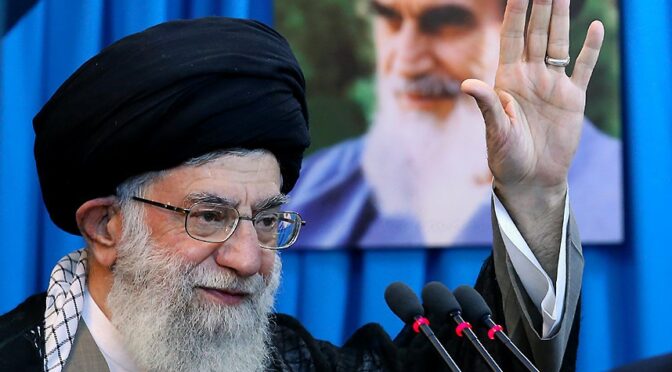Article published in The Sunday Telegraph, 12 January 2024. © Richard Kemp
The airstrikes by the US and UK against the Houthis in Yemen mean we are now effectively at war with Iran. The terrorist group is an Iranian proxy, funded, armed and equipped by the Islamic Republic. While the Houthis also work to their own agenda inside Yemen, Iran will have given the orders to fire missiles and drones at southern Israel shortly after the Hamas massacre on October 7. It will have instructed the Houthis to target Israeli-linked cargo in the Red Sea, later widening the campaign to include ships with no connections to Israel and, in the past few days, US, British and French warships.
Like Islamic Jihad in Gaza and Hezbollah in Lebanon, the Houthis are effectively controlled by the Islamic Revolutionary Guard Corps (IRGC), a key element of the Iranian state with responsibility for supporting, training and directing proxy terror groups.
The grim consequences of directly confronting Iranian aggression with military force explain why Joe Biden has waited so long before dealing with this enormous threat to international trade. The US president has been adopting a strategy of appeasing Tehran, bending over backwards to try to revive Obama’s flawed nuclear deal after Trump ripped it up. Behind the scenes, Britain has been concerned about Iran’s role in the region and the growing danger of the nuclear programme, but has reluctantly gone along with the US agenda.
The hope is that a significant blow at the Houthis will deter both them and Iran. But Thursday night’s Tomahawk cruise missile and combat plane strikes against launch sites, radars, drone production centres and munitions warehouses have not defanged the Houthis. If this first round of deterrent action doesn’t work – and the Houthis weren’t deterred by years of Saudi airstrikes against them – then they will have to be hit again and again. John Kirby, US national security adviser, speaks of “defeating” the Houthi threat and Biden has now promised repeated military action in Yemen if necessary.
Having so far restrained his military from properly responding to more than 120 attacks on US forces in Syria and Iraq since October, has the US president finally found the steel to properly take on this broader Iranian-directed threat?
We might have seen the beginnings of a new resolve this week. A US drone strike in Baghdad killed the Iranian-affiliated terrorist leader Mushtaq Talib al-Saidi, the man behind attacks on US forces in Iraq. It may be that these actions are enough to induce Tehran to back down.
But the odds of that happening are slim and I doubt Ayatollah Khamenei, given Biden’s track record, is taking him seriously even now. In his statement explaining the strikes, not once did the US president mention Iran’s involvement, without which the Houthis could never have launched their attacks.
We must be ready to see a defiant Iran after the US-UK attacks. Khamenei may not be foolish enough to directly take on the Americans, but he is as likely as ever to seek revenge by proxy. The Houthis could again be sent into action against Saudi oilfields, despite the supposed rapprochement between Riyadh and Tehran. Attacks might be stepped up against shipping in the Red Sea, and against US troops in Iraq and Syria. Hezbollah might be instructed to unleash even greater violence against Israel using its vast array of missiles.
And we should not forget that Iran’s reach is not confined to the region: the IRGC has terrorist cells and proxies across the West. They are intended to be activated if there is an attack on Iran itself, but could still be used in the current situation.
If Iran does choose to fight back, we must be ready to reply with overwhelming force. Biden should not attempt to restrain Israel from dealing decisively with Hezbollah. In the worst case, the US may need to confront Iranian regional aggression head on. It will need to do so before Tehran achieves nuclear weapons capability, which is not far off.
Image: Wikimedia Commons

